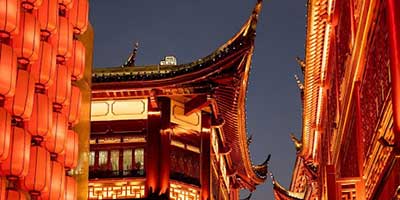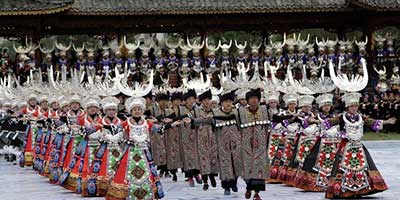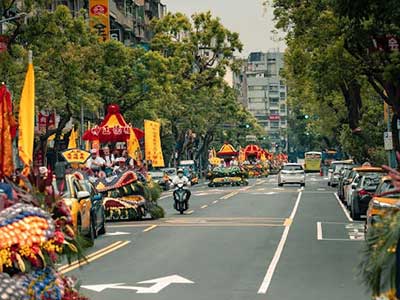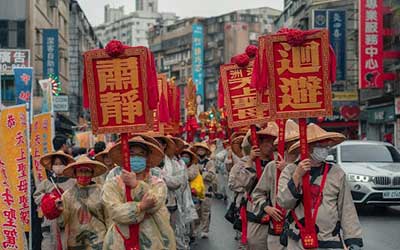Embracing the Year of the Dragon: Chinese New Year 2024 Traditions and Impact on Manufacturing
 As China eagerly awaits their Year of the Dragon in 2024, the Chinese New Year Holiday stands as one of the most celebrated and culturally rich festivals, even globally in other countries. This joyous holiday is marked by vibrant traditions, family reunions, and a unique set of customs that have been passed down through generations and in some cases, millenia. In this post, we delve into one of the most long standing traditions and holidays and explore how it influences the manufacturing sector.
As China eagerly awaits their Year of the Dragon in 2024, the Chinese New Year Holiday stands as one of the most celebrated and culturally rich festivals, even globally in other countries. This joyous holiday is marked by vibrant traditions, family reunions, and a unique set of customs that have been passed down through generations and in some cases, millenia. In this post, we delve into one of the most long standing traditions and holidays and explore how it influences the manufacturing sector.
Chinese New Year Traditions:
 Each Chinese New Year is steeped with traditions and predictions for the year. This year some of the things that are supposed to bring luck are the numbers 2 and 7, the color white, and the element rose gold.
Each Chinese New Year is steeped with traditions and predictions for the year. This year some of the things that are supposed to bring luck are the numbers 2 and 7, the color white, and the element rose gold.
Chinese New Year is synonymous with family reunions. People from across the country travel back to their hometowns to celebrate with loved ones. The emphasis on family bonding and the renewal of relationships is a central theme during this time, similar to the western New Year.
Red is the predominant color during Chinese New Year, symbolizing luck and prosperity. Homes and public spaces are adorned with red lanterns, couplets, and intricate paper cuttings. The festive atmosphere is further enhanced by the mesmerizing glow of traditional Chinese lanterns.
Food also plays a crucial role in the celebrations. Families gather for huge banquets featuring symbolic dishes believed to bring good fortune. Dumplings, fish, and nian gao (glutinous rice cake) are just a few examples of the culinary delights enjoyed during the festivities.
Streets come alive with the rhythmic beats of drums and the vibrant colors of dragon dances. These performances are believed to ward off evil spirits and bring good luck to the community. Parades featuring elaborate costumes and mesmerizing choreography are a common sight. The night sky is illuminated with brightening fireworks and firecrackers, creating a breathtaking display that symbolizes the casting away of negativity and the ushering in of positive energy.
Impact on Manufacturing:
 While Chinese New Year is a time of joy and celebration, its impact on the manufacturing sector is notable. The Chinese New Year is generally expected to last from February 2-22, however this can differ from region to region. The extensive shutdowns and workforce migration during the holiday period can affect production schedules and supply chains. Here are some ways in which manufacturing is influenced:
While Chinese New Year is a time of joy and celebration, its impact on the manufacturing sector is notable. The Chinese New Year is generally expected to last from February 2-22, however this can differ from region to region. The extensive shutdowns and workforce migration during the holiday period can affect production schedules and supply chains. Here are some ways in which manufacturing is influenced:
- Many factories shut down during the Chinese New Year period as workers return home to celebrate with their families. This temporary halt in production can disrupt timelines for businesses relying on a continuous manufacturing process.
- The mass migration of workers can sometimes result in a significant slowdown in logistics and transportation. This can lead to delays in the delivery of raw materials and finished goods, affecting companies both within and outside China.
Increased Production Prior to the Holiday:
 To mitigate the impact of the holiday shutdown, many manufacturers ramp up production in the weeks leading up to Chinese New Year. This surge in output helps to build up inventory and fulfill orders before the festivities begin. While the upkeep in production helps, it’s better to order well in advance before the holidays for the best costs and production times.
To mitigate the impact of the holiday shutdown, many manufacturers ramp up production in the weeks leading up to Chinese New Year. This surge in output helps to build up inventory and fulfill orders before the festivities begin. While the upkeep in production helps, it’s better to order well in advance before the holidays for the best costs and production times.
As China celebrates the Year of the Dragon, the whole world feels the effects of it. Its impact on manufacturing serves as a reminder of the interconnected global economy and the need for businesses to navigate the challenges presented by cultural differences, but also embrace that a new year can bring new opportunities.
